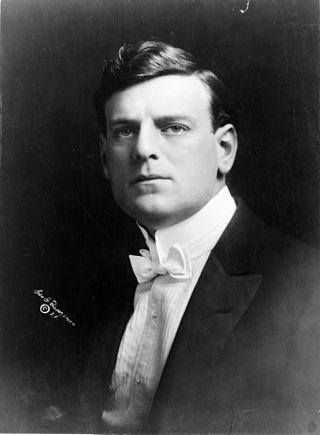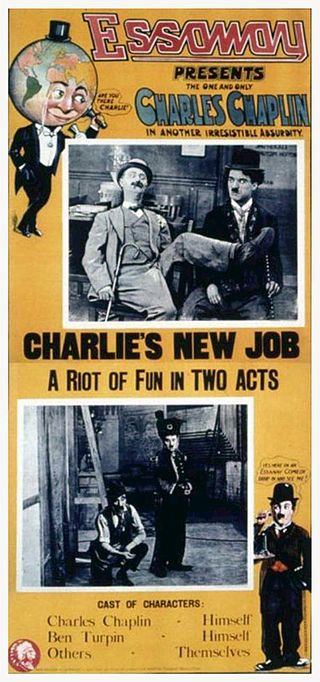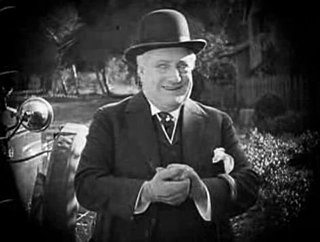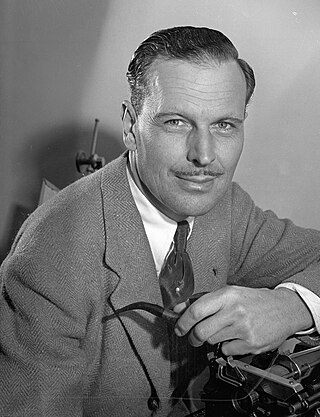
The Essanay Film Manufacturing Company was an early American motion picture studio. The studio was founded in 1907 in Chicago, and later developed an additional film lot in Niles Canyon, California. Its various stars included Francis X. Bushman, Gloria Swanson and studio co-owner, actor and director, Broncho Billy Anderson. It is probably best known today for its series of Charlie Chaplin comedies from 1915-1916. In late 1916, it merged distribution with other studios and stopped issuing films in the fall of 1918. According to film historian Steve Massa, Essanay is one of the important early studios, with comedies as a particular strength. Its founders, George Kirke Spoor and Anderson, were subsequently awarded special Academy Awards for pioneering contributions to film.

Gilbert M. "Broncho Billy" Anderson was an American actor, writer, film director, and film producer, who was the first star of the Western film genre. He was a founder and star for Essanay studios. In 1958, he received a special Academy Award for being a pioneer of the film industry.

George Ade was an American writer, syndicated newspaper columnist, librettist, and playwright who gained national notoriety at the turn of the 20th century with his "Stories of the Streets and of the Town", a column that used street language and slang to describe daily life in Chicago, and a column of his fables in slang, which were humorous stories that featured vernacular speech and the liberal use of capitalization in his characters' dialog.

The New Janitor was the 27th comedy from Keystone Studios to feature Charlie Chaplin. The film is arguably one of his best for the studio, and a precursor to a key Essanay Studios short, The Bank. The film also demonstrates the differences that Chaplin had with Keystone comedy in that it is a coherent whole in which the stock characters actually fill some emotional center. Chaplin brings a certain complexity to his janitor, unusual to the comedy factory of Mack Sennett. The film, which stars among Sennett's bit players Jess Dandy, Al St. John, John T. Dillon, and Helen Carruthers, is far more centered and clear in direction. Comedy mostly flows from the core of the story instead of being a by-product of it. After all this is a typical bank robbery storyline.

A Night in the Show was Charlie Chaplin's 12th film for Essanay. It was made at Majestic Studio in Los Angeles in the fall of 1915. Chaplin played two roles: one as Mr. Pest and one as Mr. Rowdy. The film was created from Chaplin's stage work from a play called Mumming Birds with the Karno Company from London. Chaplin performed this play during his U.S. tours with Fred Karno company and decided to bring some of this play to his film work. Edna Purviance played a minor role as a lady in the audience.

The Lubin Manufacturing Company was an American motion picture production company that produced silent films from 1896 to 1916. Lubin films were distributed with a Liberty Bell trademark.

Charlotte E. Burton was an American silent film actress.

The Chicago film industry is a central hub for motion picture production and exhibition that was established before Hollywood became the undisputed capital of film making. In the early 1900s, Chicago boasted the greatest number of production companies and filmmakers. Essanay Studios founded by George K. Spoor was one of the earliest successful studios to produce movies in Chicago, employing stars such as Charlie Chaplin and Gloria Swanson. Actor and co-founder of Essanay Studios, Broncho Billy Anderson gave birth to the western genre. Early film companies such as Essanay Studios produced multiple silent films every week and rented viewing equipment to showcase the latest cinematography to the public. This rental culture gave birth to the popularity of Nickelodeons up until the Great Depression. However, due to the high demand for motion pictures during this time, a black market for films and equipment developed. The Motion Picture Patents Company, established in 1909 as a conglomerate of the major studios, sought to eliminate all illegal use of patented film equipment. As a result, independent ventures entered the film scene. Independents drove the film industry to the west to avoid legal trouble with the trust of major film companies united under the Motion Picture Patents Company. The west offered fairer weather and scenery that better accommodated film making. Not until the 1980s and early 21st century has Chicago experienced a film production revival. Blockbusters, such as Blues Brothers, Sixteen Candles, and The Dark Knight, have rejuvenated the Chicago film scene.

His New Job is a 1915 American short silent comedy film written by, directed by, and starring Charlie Chaplin. Gloria Swanson appears as an uncredited extra. The title is an inside reference to this being Chaplin's first film after leaving Keystone Studios for Essanay Studios. It was also the only film Chaplin shot at Essanay's Chicago studio. He found the facilities and climate not to his liking, and Chaplin soon relocated back to California.

Robert Bolder was an English film actor of the silent era. He appeared in more than 120 films between 1912 and 1936. He was born in London and died in Los Angeles, California. In the early part of the 20th-century Bolder was involved in several Broadway productions.

The Golden Age of Indiana Literature is a period from 1880 to 1920 when many nationally and internationally acclaimed literary works were created by natives of the state of Indiana. During this time, many of the United States' most popular authors came from Indiana. Maurice Thompson, George Ade, Booth Tarkington, Theodore Dreiser, Edward Eggleston, Frank McKinney Hubbard, George Barr McCutcheon, Meredith Nicholson, Gene Stratton Porter, Lew Wallace, and James Whitcomb Riley were foremost among the Hoosier authors.
Charles Jacob Stine was an American silent film actor.

Alfred Emory Johnson was an American actor, director, producer, and writer. As a teenager, he started acting in silent films. Early in his career, Carl Laemmle chose Emory to become a Universal Studio leading man. He also became part of one of the early Hollywood celebrity marriages when he wed Ella Hall.
Thomas Commerford was an American male actor on stage and in silent films. He was also known as Tom I. Comberford and T. I. Comberford.
The Fable of the Roistering Blades is a 1915 short film directed by Richard Foster Baker, based upon a story by George Ade, and starring Wallace Beery and Charles J. Stine. The silent short was produced by the Essanay Film Manufacturing Company and distributed by the General Film Company. Beery was thirty years old at the time of filming.
Wilding Picture Productions, Inc. was a major supplier of audio-visual communications services, involved primarily in the production and distribution of motion pictures, slidefilms, TV commercials, and business shows. It produced industrial films for many corporations on a wide range of subjects, from expounding proper use of the company's products to productivity. During World War II, it was the main supplier of war-related films for the United States Armed Forces.
Gilbert P. Hamilton was an American film company executive and director. He worked at Essanay as a cinematographer, headed the St. Louis Motion Picture Company, and then launched the Albuquerque Film Manufacturing Company.

The Dawson Film Find (DFF) was the accidental discovery in 1978 of 372 film titles preserved in 533 reels of silent-era nitrate films in the Klondike Gold Rush town of Dawson City, Yukon, Canada. The reels had been buried under an abandoned hockey rink in 1929 and included lost films of feature movies and newsreels. A construction excavation inadvertently uncovered the forgotten cache of discarded films, which were unintentionally preserved by the permafrost.
Camille D'Arcy was a stage and silent film actress in the early years of the movie business up to 1916, a relatively large woman she played matron or character roles in silent films. During her short movie career all of her film appearances were with the Essanay Company out of Chicago. In private life she was married to Dr. Loren Wilder. In the fall of 1916 she went swimming in Lake Michigan, caught an infection and died at age 37 in Chicago.

Lillian Drew, born Lillian Margaret Flannery, was an American actress in silent films.













